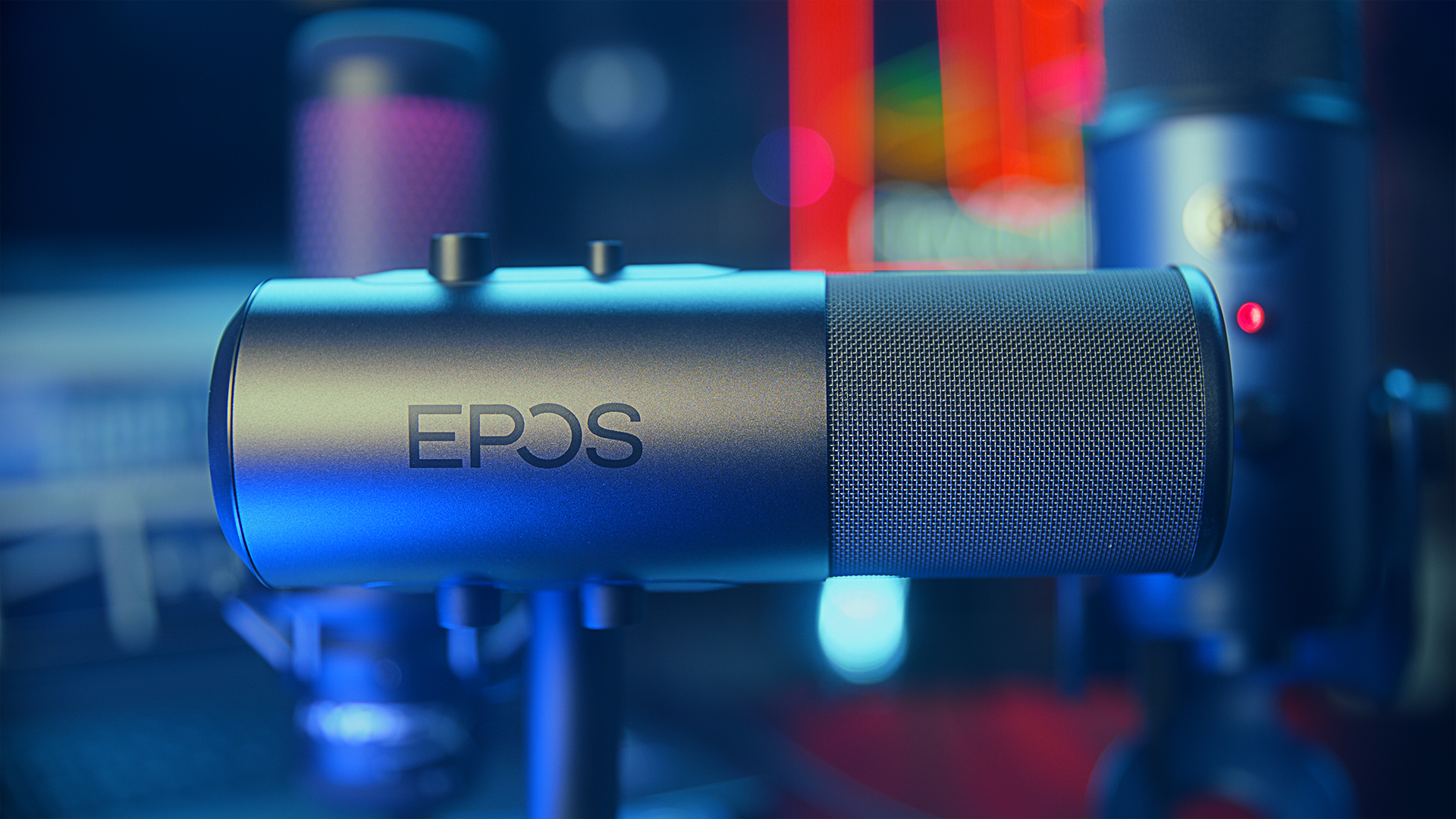EPOS Audio B20 Streaming Microphone Review
Last year, Sennheiser branched off their gaming line of audio products (a collaboration between Demant A/S and Sennheiser) to its own company: EPOS Audio. This is awkward as EposVox/Epos Vox, but we’re still going to review it.
PRODUCT LINKS:
- EPOS B20 Streaming Mic on Amazon (affiliate): https://geni.us/ljBDNYg
- EPOS Audio website: https://www.eposaudio.com/en/us/gaming/products/b20-grey-gaming-microphone-1000417#id-m65-support-and-downloads-headline-79558_14
Physical Overview
The EPOS B20 mic looks incredibly clean. With a dark grey or semi-black sheen, a wrap-around mesh around the capsule, and easy buttons and knobs, it definitely stands out among other streaming mics. Plus, there’s no RGB!
The mounting arm protrudes from the side of the mic to attach to the mic stand. This is not removable, so your mounting options may be limited. This also means that you are unable to attach any sort of shock mount to the microphone, which is pretty disappointing. The threading on the bottom of the mic arm is 3/8″ so for normal mic arms or boom poles you will need a 3/8″ male to 5/8″ female adapter, such as this one (Amazon affiliate link).
This is a side-address microphone, meaning you talk into the side of the mic (with the mute button and volume dial facing you), not the top.

The front of the mic features a mute button and volume knob for the headphone output. The back features a gain knob (for the microphone’s gain) and a switch to go between the four different polar pickup patterns available: Cardioid (what most streamers will use), Stereo (for ASMR or wider sound stage recordings), bidirectional (for interviews or podcasts), and omnidirectional (picks up everything).
The bottom of the mic features a USB Type-C port (USB 2.0) and a 3.5mm headphone jack.
This is still a condenser microphone, meaning it will perform poorly at rejecting background noise, keyboard and mouse clicks, etc. compared to dynamic microphones.
Sound Quality

Compared to similarly-priced USB condenser microphones (such as the Blue Yeti, HyperX Quadcast S, Samson G-Track Pro) the EPOS B20 is… fine? It doesn’t stand out in any specific way, with the G-Track Pro sounding a bit warmer or “more full” than the B20, but a tad muddier. The B20 has clarity that will help cut across background music or game sound but doesn’t sound particularly natural in the lower-end.
Of the mics tested for this comparison, my favorite overall sound is the HyperX Quadcast S, it just sounds rock solid. Plus, it seems to have a built-in compressor or limiter of sorts that keeps it from distorting or peaking at high-gain loud scenarios in some way.
EPOS Gaming Suite Software

Included with the mic is the “EPOS Gaming Suite” software that lets you apply a 9-band EQ, Noise Gate or Noise cancellation to your microphone’s audio, apply a high-pass filter, adjust sidetone levels to the headphones, and save and manage presets.
Conclusion
Overall, the EPOS B20 is a solid little microphone for $200 – but it doesn’t do anything to stand out, at all. There’s nothing inherently wrong with it, and it’s got some great things going for it, but given that all of its competitors have been out long enough to drop in price or become available on the used market for cheaper, it’s hard to argue that a streamer should spend $200 on it at this point in time. Unless aesthetics are super important, then go for it. The mic looks incredible.
PRODUCT LINKS:
- EPOS B20 Streaming Mic on Amazon (affiliate): https://geni.us/ljBDNYg
- EPOS Audio website: https://www.eposaudio.com/en/us/gaming/products/b20-grey-gaming-microphone-1000417#id-m65-support-and-downloads-headline-79558_14
RELATED REVIEWS:

